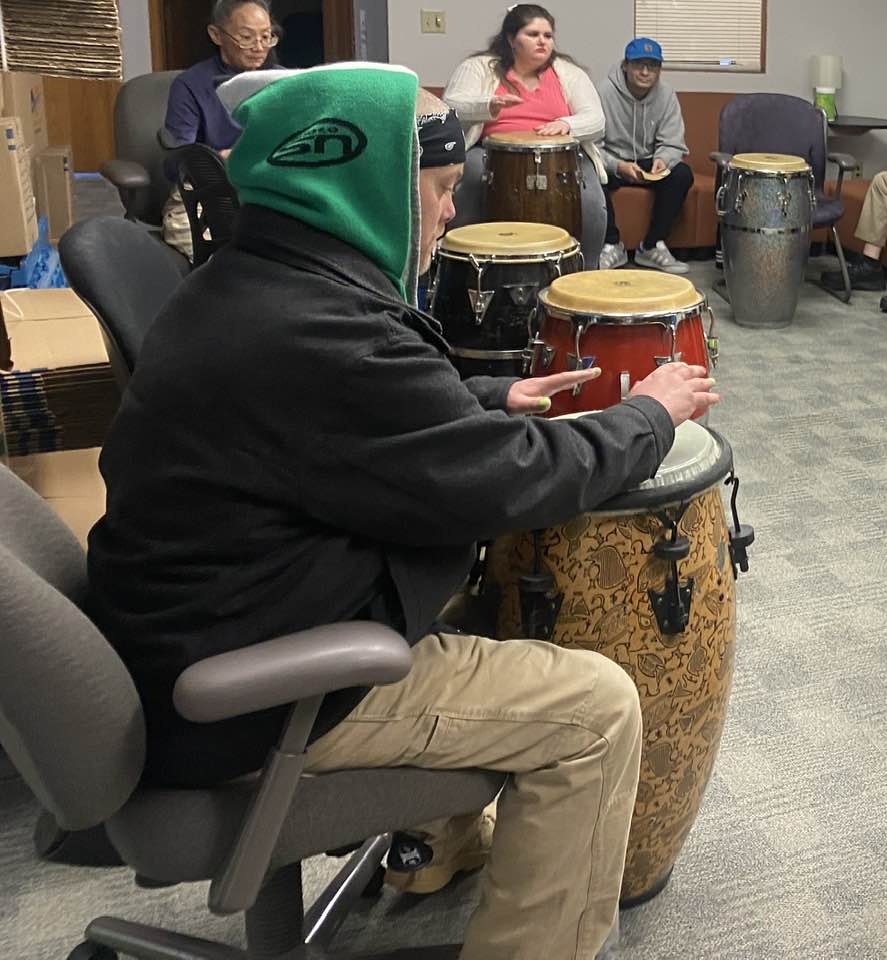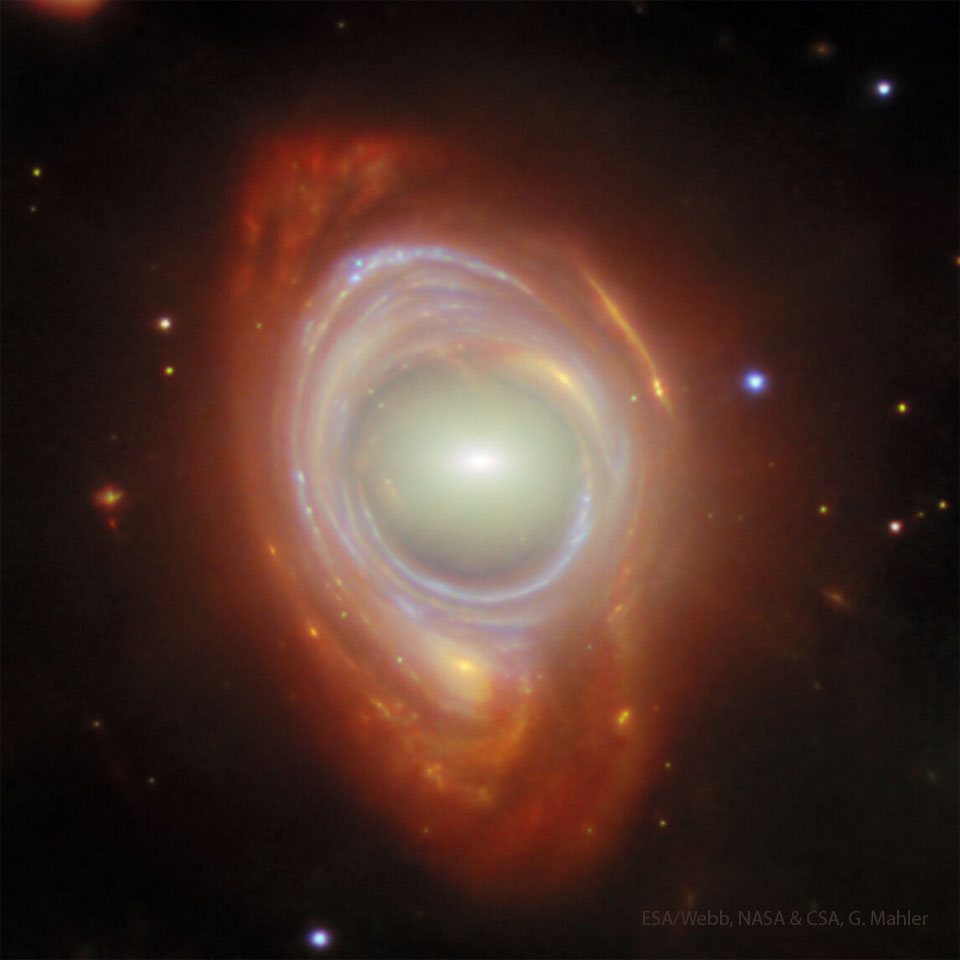Blog
John Christopher Williams AO OBE (born 24 April 1941) is an Australian-born classical guitarist renowned for his ensemble playing as well as his interpretation and promotion of the modern classical guitar repertoire. In 1973, he shared a Grammy Award in the Best Chamber Music Performance category with fellow guitarist Julian Bream for Together (released in the US as Julian and John (Works by Lawes, Carulli, Albéniz, Granados)). Guitar historian Graham Wade has said that “John is perhaps the most technically accomplished guitarist the world has seen.”
more...John Arnold Griffin III (April 24, 1928 – July 25, 2008) was an American jazz tenor saxophonist. Nicknamed “the Little Giant” for his short stature and forceful playing, Griffin’s career began in the mid-1940s and continued until the month of his death. A pioneering figure in hard bop, Griffin recorded prolifically as a bandleader in addition to stints with pianist Thelonious Monk, drummer Art Blakey, in partnership with fellow tenor Eddie “Lockjaw” Davis and as a member of the Kenny Clarke/Francy Boland Big Bandafter he moved to Europe in the 1960s. In 1995, Griffin was awarded an Honorary Doctorate of Music from Berklee College of Music.
more...Joe Henderson (April 24, 1937 – June 30, 2001 Lima, OH) was an American jazz tenor saxophonist and very occasional flute player. In a career spanning more than four decades, Henderson played with many of the leading American players of his day and recorded for several prominent labels, including Blue Note, Milestone, and Verve.
more...
Jupiters signature atmospheric bands and vortices were used to form this interplanetary post-impressionist work of art. The creative image from citizen scientist Rick Lundh uses data from the Juno spacecraft’s JunoCam. To paint on the digital canvas, a JunoCam image with contrasting light and dark tones was chosen for processing and an oil-painting software filter applied. The image data was captured during perijove 10. That was Juno’s December 16, 2017 close encounter with the solar system’s ruling gas giant. At the time the spacecraft was cruising about 13,000 kilometers above northern Jovian cloud tops. Now in an extended mission, Juno has explored Jupiter and its moons since entering orbit around Jupiter in July of 2016. 535 million miles.

more...
Roy Kelton Orbison (April 23, 1936 – December 6, 1988) was an American singer, songwriter, and guitarist known for his distinctive and powerful voice, complex song structures, and dark, emotional ballads. Orbison’s music is mostly in the rock musicgenre and his most successful periods were in the early 1960s and the late 1980s. He was nicknamed “The Caruso of Rock” and “The Big O”. Many of Orbison’s songs conveyed vulnerability at a time when most male rock-and-roll performers projected strength. He performed with minimal motion and in black clothes, matching his dyed black hair and dark sunglasses.
Born in Texas, Orbison began singing in a country-and-western band as a teenager. He was signed by Sam Phillips of Sun Records in 1956 after being urged by Johnny Cash. Elvis was leaving Sun and Phillips was looking to replace him. His first Sun recording, “Ooby Dooby”, was a direct musical sound-a-like of Elvis’s early Sun recordings. He had some success at Sun but enjoyed his greatest success with Monument Records. From 1960 to 1966, 22 of Orbison’s singles reached the Billboard Top 40. He wrote or co-wrote almost all of his own Top 10 hits, including “Only the Lonely” (1960), “Running Scared” (1961), “Crying” (1961), “In Dreams” (1963) and “Oh, Pretty Woman” (1964).
After the mid-1960s Orbison suffered a number of personal tragedies, and his career faltered. He experienced a resurgence in popularity in the 1980s, following the success of several cover versions of his songs. In 1988, he co-founded the Traveling Wilburyssupergroup with George Harrison, Bob Dylan, Tom Petty and Jeff Lynne. Orbison died of a heart attack that December at age 52. One month later, his song “You Got It” (1989) was released as a solo single, becoming his first hit to reach both the US and UK Top 10 in nearly 25 years.
Orbison’s honors include inductions into the Rock and Roll Hall of Fame and Nashville Songwriters Hall of Fame in 1987, the Songwriters Hall of Fame in 1989 and the Musicians Hall of Fame and Museum in 2014. He received a Grammy Lifetime Achievement Award and five other Grammy Awards. Rolling Stone placed him at number 37 on its list of the “Greatest Artists of All Time” and number 13 on its list of the “100 Greatest Singers of All Time”. In 2002, Billboard magazine listed him at number 74 on its list of the Top 600 recording artists.
more...Milton Banana (born Antônio de Souza) (23 April 1935 – 22 May 1999) was a Brazilian bossa nova and jazz drummer. A self-taught musician, he is best known for his collaboration with João Gilberto and Stan Getz and for his work with the trio he founded.
more...Charles Edward “Cow Cow” Davenport (April 23, 1894 – December 3, 1955 Anniston, AL) was an American boogie-woogie and piano blues player as well as a vaudeville entertainer. He also played the organ and sang.
Davenport, who also made recordings under the pseudonyms of Bat The Humming Bird, George Hamilton and The Georgia Grinder, is a member of the Alabama Music Hall of Fame.
more...Sergei Sergeyevich Prokofiev (27 April [O.S. 15 April] 1891 – 5 March 1953) was a Russian composer, pianist, and conductor who later worked in the Soviet Union. As the creator of acknowledged masterpieces across numerous music genres, he is regarded as one of the major composers of the 20th century. His works include such widely heard pieces as the March from The Love for Three Oranges, the suite Lieutenant Kijé, the ballet Romeo and Juliet—from which “Dance of the Knights” is taken—and Peter and the Wolf. Of the established forms and genres in which he worked, he created—excluding juvenilia—seven completed operas, seven symphonies, eight ballets, five piano concertos, two violin concertos, a cello concerto, a symphony-concerto for cello and orchestra, and nine completed piano sonatas.
A graduate of the Saint Petersburg Conservatory, Prokofiev initially made his name as an iconoclastic composer-pianist, achieving notoriety with a series of ferociously dissonant and virtuosic works for his instrument, including his first two piano concertos. In 1915, Prokofiev made a decisive break from the standard composer-pianist category with his orchestral Scythian Suite, compiled from music originally composed for a ballet commissioned by Sergei Diaghilev of the Ballets Russes. Diaghilev commissioned three further ballets from Prokofiev—Chout, Le pas d’acier and The Prodigal Son—which, at the time of their original production, all caused a sensation among both critics and colleagues. But Prokofiev’s greatest interest was opera, and he composed several works in that genre, including The Gambler and The Fiery Angel. Prokofiev’s one operatic success during his lifetime was The Love for Three Oranges, composed for the Chicago Opera and performed over the following decade in Europe and Russia.
After the Revolution of 1917, Prokofiev left Russia with the approval of Soviet People’s Commissar Anatoly Lunacharsky, and resided in the United States, then Germany, then Paris, making his living as a composer, pianist and conductor. In 1923 he married a Spanish singer, Carolina (Lina) Codina, with whom he had two sons; they divorced in 1947. In the early 1930s, the Great Depression diminished opportunities for Prokofiev’s ballets and operas to be staged in America and Western Europe. Prokofiev, who regarded himself as a composer foremost, resented the time taken by touring as a pianist, and increasingly turned to the Soviet Union for commissions of new music; in 1936, he finally returned to his homeland with his family. His greatest Soviet successes included Lieutenant Kijé, Peter and the Wolf, Romeo and Juliet, Cinderella, Alexander Nevsky, the Fifth and Sixth Symphonies, On Guard for Peace, and the Piano Sonatas Nos. 6–8.
The Nazi invasion of the USSR spurred Prokofiev to compose his most ambitious work, an operatic version of Leo Tolstoy’s War and Peace; he co-wrote the libretto with Mira Mendelson, his longtime companion and later second wife. In 1948, Prokofiev was attacked for producing “anti-democratic formalism“. Nevertheless, he enjoyed personal and artistic support from a new generation of Russian performers, notably Sviatoslav Richter and Mstislav Rostropovich: he wrote his Ninth Piano Sonata for the former and his Symphony-Concerto for the latter.
more...Vernice “Bunky” Green Jr (April 23, 1933 – March 1, 2025 Milwaukee) was an American jazz alto saxophonist and educator.
Green recorded several albums during the 1960s, including Step High (featuring Wynton Kelly and Jimmy Cobb), Playing for Keeps, and Soul in the Night (which paired Green with Sonny Stitt). In addition to a handful of records as a leader on the Vanguard label during the 1970s, he also recorded several albums with Elvin Jones, including Summit Meeting and Time Capsule. His 1989 session on the Delos label, Healing the Pain, commemorates the death of his parents and was awarded the coveted 5-star rating from DownBeat magazine. Green’s studio album, Another Place (which features the rhythm section of Jason Moran, Lonnie Plaxico, and Nasheet Waits), also received a 5-star review from Down Beat. In July 2008, his recording The Salzau Quartet Live at Jazz Balticawas released.
more...Cándido Camero Guerra (22 April 1921 – 7 November 2020), known simply as Cándido, was a Cuban conga and bongo player. He is considered a pioneer of Afro-Cuban jazz and an innovator in conga drumming. He was responsible for the embracing of the tuneable conga drum, the first to play multiple congas developing the techniques that all players use today, as well as the combination of congas, bongos, and other instruments such as the foot-operated cowbell, an attached guiro, all played by just one person. Thus he is the creator of the multiple percussion set-up.
After moving to New York in 1946, Camero played with Dizzy Gillespie, Billy Taylor and Stan Kenton, and from 1956 he recorded several albums as a leader. His biggest success came in 1979 with his disco recordings for Salsoul. He continued to perform until the late 2010s, recording several albums for the audiophile label Chesky Records, including Inolvidable, with Graciela, which earned him a nomination at the 47th Annual Grammy Awards.
more...-
This new NASA/ESA/CSA James Webb Space Telescope Picture of the Month features a rare cosmic phenomenon called an Einstein ring. What at first appears to be a single, strangely shaped galaxy is actually two galaxies that are separated by a large distance. The closer foreground galaxy sits at the center of the image, while the more distant background galaxy appears to be wrapped around the closer galaxy, forming a ring. Einstein rings occur when light from a very distant object is bent (or ‘lensed’) about a massive intermediate (or ‘lensing’) object. This is possible because spacetime, the fabric of the Universe itself, is bent by mass, and therefore light travelling through space and time is bent as well. This effect is much too subtle to be observed on a local level, but it sometimes becomes clearly observable when dealing with curvatures of light on enormous, astronomical scales, such as when the light from one galaxy is bent around another galaxy or galaxy cluster. When the lensed object and the lensing object line up just so, the result is the distinctive Einstein ring shape, which appears as a full circle (as seen here) or a partial circle of light around the lensing object, depending on the precision of the alignment. Objects like these are the ideal laboratory in which to research galaxies too faint and distant to otherwise see. The lensing galaxy at the center of this Einstein ring is an elliptical galaxy, as can be seen from the galaxy’s bright core and smooth, featureless body. This galaxy belongs to a galaxy cluster named SMACSJ0028.2-7537. The lensed galaxy wrapped around the elliptical galaxy is a spiral galaxy. Even though its image has been warped as its light travelled around the galaxy in its path, individual star clusters and gas structures are clearly visible. The Webb data used in this image were taken as part of the Strong Lensing and Cluster Evolution (SLICE) survey (programme 5594), which is led by Guillaume Mahler at University of Liège in Belgium, and consists of a team of international astronomers. This survey aims to trace 8 billion years of galaxy cluster evolution by targeting 182 galaxy clusters with Webb’s Near-InfraRed Camera instrument. This image also incorporates data from two of the NASA/ESA Hubble Space Telescope’s instruments, the Wide Field Camera 3 and the Advanced Camera for Surveys. [Image Description: In the centre is an elliptical galaxy, seen as an oval-shaped glow around a small bright core. Around this is wrapped a broad band of light, appearing like a spiral galaxy stretched and warped into a ring, with bright blue lines drawn through it where the spiral arms have been stretched into circles. A few distant objects are visible around the ring on a black background.]

Bernard Alfred “
Jack” Nitzsche (April 22, 1937 – August 25, 2000 Chicago) was an American musician, arranger, songwriter, composer, and record producer. He came to prominence in the early 1960s as the right-hand-man of producer Phil Spector, and went on to work with the Rolling Stones, Neil Young, and others. He worked extensively in film scores for the films Performance, The Exorcist and One Flew Over the Cuckoo’s Nest. In 1983, he won the Academy Award for Best Original Song for co-writing “Up Where We Belong” with Buffy Sainte-Marie.
more...Harvey William Mason (born February 22, 1947) is an American jazz drummer, record producer, and member of the band Fourplay. He was the original drummer for Herbie Hancock‘s band The Headhunters. He was the original drummer for The Headhunters, the jazz fusion band led by Herbie Hancock. After leaving Headhunters in the early 1970s, Mason co-founded the jazz quartet Fourplay. They are on an indefinite hiatus as of 2017. Mason has played as a sideman with Bill Withers, George Benson, and Lee Ritenour.
more...
Gilberto Miguel Calderón (April 22, 1931 – February 15, 2009), known professionally as Joe Cuba, was an American conga drummer of Puerto Rican descent widely regarded as the “Father of Latin Boogaloo“.
In 1950, when he was 19 years old, he played for Joe Panama and also for a group called La Alfarona X. The group soon disbanded and Calderón enrolled in college to study law. While at college he attended a concert in which Tito Puente performed “Abaniquito”. He went up to Puente and introduced himself as a student and fan, and soon they developed what was to become a lifetime friendship. This event motivated Calderón to organize his own band. In 1954, his agent recommended that he change the band’s name from the José Calderón Sextet to the Joe Cuba Sextet, and the newly named Joe Cuba Sextet made their debut at the Stardust Ballroom.
In 1962, after recording three albums for Mardi Gras Records, Cuba recorded his first album with the Joe Cuba Sextet called Steppin’ Out featuring the hit “To Be With You”, featuring the vocals of Cheo Feliciano and Jimmy Sabater Sr. The band became popular in the New York Latin community. The lyrics to Cuba’s music used a mixture of Spanish and English, becoming an important part of the Nuyorican Movement.
In 1965, the Sextet got their first crossover hit with the Latin and soul fusion of “El Pito (I’ll Never Go Back to Georgia)“. The “I’ll Never Go Back to Georgia” chant was taken from Dizzy Gillespie’s intro to the seminal Afro-Cuban tune “Manteca.” Sabater later revealed that “None of us had ever been to Georgia.”
more...
More Posts
- Marian McPartland
- Sister Rosetta Tharpe
- World Music Sephardica Sinfónico
- Daily Roots Tommy McCook & the Supersonics
- Betraying Heros
- Science Reality
- Curley Russell
- Cosmo NGC 2359
- Tom Constanten
- Clarence Frogman Henry
- Buster Bennett
- Buster Harding
- Lenny Tristano
- World Fusion Tigran Hamasyan
- Daily Roots Prince Jammy
- Cosmo LDN 1235
- Big Daddy Kinsey
- Wilson Pickett
- Jose Mangual Sr
- Andy Narell


